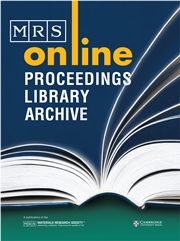Article contents
The Characterisation of a Bronze Age Weapon Hoard
Published online by Cambridge University Press: 21 March 2011
Abstract
The study described here is based on the proposition that all events in the life of a bronze artefact, from the moment it was cast to the time it became available for characterisation, have the potential to leave a trace that can be identified by one or more metallographic methods. The hoard presented here was found at Waterden, Norfolk, England by metal detecting and excavation after it was scattered by the plough. The find comprises 201 fragments from approximately 130 swords and spearheads. It is important for understanding the evolution of the Bronze Age sword in Britain, and also for understanding the destruction and deposition of weapons in weapon-only assemblages. Besides a consideration of the hoard from a typological perspective the project used five methods of examination: a) a surface study for manufacturing traces, combat damage, possible cremation, and damage in the ground or at recovery, b) radiography, c) compositional analysis by electron probe microanalysis, d) optical metallography, and e) microhardness testing. This is the first occasion in which these techniques have been combined in the investigation of a complete hoard. It has been possible to divide the results from each technique into simple categories so that clear correlations can be made, so it can be shown that sword blades had more elaborate finishing than others, that some workshops had better casting practice than others and that the great majority of swords had combat damage. The effects of destruction and fire are also discussed and a context for the deposition of the hoard reconstructed.
- Type
- Research Article
- Information
- Copyright
- Copyright © Materials Research Society 2002
References
REFERENCES
- 1
- Cited by


